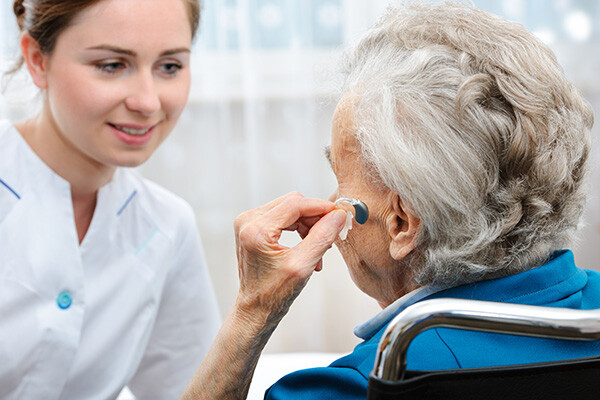A hearing aid fitting is highly recommended for anyone that needs a hearing aid. It can help you find the ideal device for your needs, and ensure you get it fitted and programmed properly. Naturally, most people have never been for a hearing aid fitting before, so there’s plenty of curiosity surrounding what happens during a hearing aid fitting? Well, we’re here to answer any queries you have, by showing you exactly what goes down.
You’ll be taught about your new device
A big part of this appointment is your audiologist going through the ins and outs of hearing aids with you. They’ll teach you everything you need to know about your new device; how it functions, how you clean it, when you shouldn’t wear it – and so on. The purpose of this is to ensure you can take care of your hearing aid without the help of an audiologist. You should be able to take it out and put it in by yourself, while also having the ability to alter settings or turn up the volume.
It’s essential that you pay attention during this, as it helps you feel more confident with your device at home. You’ll also get the most out of it when you know how to handle the device, etc. Plus, by understanding the proper maintenance guides, you can extend the lifespan of your hearing aid too.
You’ll get the device fitted
Of course, it wouldn’t be a hearing aid fitting without your devices actually getting fitted. Here, your audiologist will insert the device into your ear and ensure that it fits nice and comfortable for you. They may play around with different device styles and sizes until you find one that fits perfectly and causes you the least irritation and discomfort. They’ll ask you all sorts of questions to ensure that there’s no pain in your ear and that you’re happy with how it fits and looks.
You’ll undergo some more hearing tests
Obviously, the fact that you’re getting hearing aids fitted signals that you’ve undergone an initial hearing examination. But, when the device is fitted, your audiologist will conduct a few other hearing tests too. Most notably, they’ll do a real ear measurement, which helps them program your hearing aid correctly and put it on the right settings to target your hearing loss. They do this with and without your hearing aid in your ear. Firstly, they measure how loud sounds are in your ear canal without the device, and then they do the same with it. This lets them get everything on the right page, so your hearing aid works correctly for your specific needs.
After these three things have been done, you’ll have a brand new hearing aid that fits well and is appropriately programmed. Now, your audiologist will likely instruct you on how to wear the device for the next few weeks. They’ll tell you to make a note of any problems you have, and these will be addressed at a future appointment. There will be a bit of a teething period once you leave the office as it can seem so strange to actually hear the world at full volume once more. But, once you get used to the feeling, you’ll start to enjoy life a lot more thanks to your hearing aids. This article should put you at ease about what happens during a hearing aid fitting.


